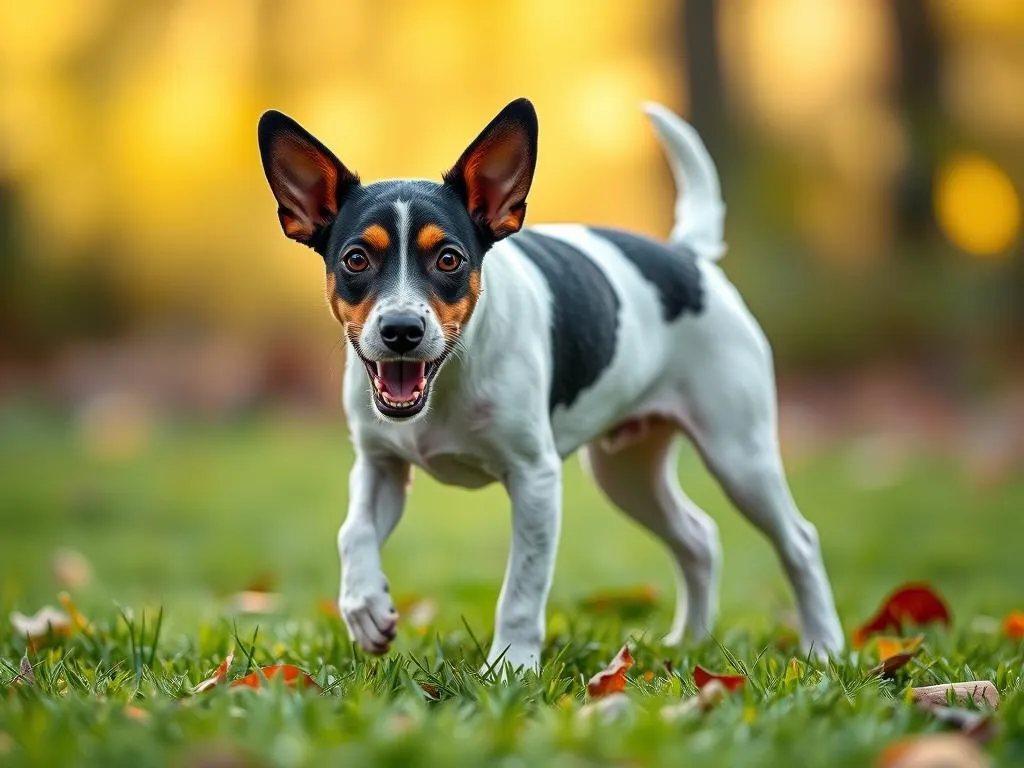
Introduction
When it comes to dog breeds, the variety and uniqueness of each breed can significantly influence the choice of pet for prospective owners. From their physical traits to their temperament and care needs, understanding these characteristics is vital for creating a harmonious relationship with a canine companion. One breed that has captured the hearts of many is the Jack Russell Terrier, a spirited and intelligent dog known for its lively demeanor and agility.
Among the variants of the Jack Russell, the short legged Jack Russell stands out. This particular variant not only showcases distinctive physical characteristics but also offers a unique personality that many families find appealing. In this article, we will explore the fascinating aspects of the short legged Jack Russell, including its history, traits, health care, training, exercise needs, grooming, and more.
Understanding the Jack Russell Terrier
History of the Jack Russell Terrier
The roots of the Jack Russell Terrier can be traced back to 19th-century England. Originally bred by Reverend John Russell, the primary goal was to create a hunting companion capable of pursuing small game such as foxes. The breed quickly gained popularity among hunters due to its tenacity and ability to dig into burrows and flush out prey.
Over the years, the breed evolved, and different types of Jack Russells emerged, including the short legged variant. While the standard Jack Russell has gained recognition from various kennel clubs, the short legged version often faces confusion regarding its classification. Despite this, both variants share a rich history rooted in hunting and companionship.
Characteristics of the Jack Russell Terrier
The Jack Russell Terrier is generally characterized by its compact size and energetic nature. Typically, these dogs weigh between 13 to 17 pounds and stand about 10 to 15 inches tall. Their coat can come in various forms, including smooth, rough, and broken, and colors typically range from white with black or brown markings to tri-color patterns.
The short legged Jack Russell, in particular, possesses a unique charm with its shorter stature, which often gives it a more robust appearance. Beyond physical traits, this breed is known for its intelligence and high energy levels, making it an excellent companion for active families.
Short Legged Jack Russell: A Closer Look
Physical Attributes
The short legged Jack Russell is characterized by its compact build, typically standing around 10 to 12 inches tall at the shoulder. Its weight generally aligns with the standard variant, ranging from 13 to 17 pounds. The coat colors and patterns are similar to those of the standard Jack Russell, including white, black, and brown combinations, making them visually appealing.
When comparing the short legged variant with the standard Jack Russell, the most noticeable difference lies in their height and proportions. While both display a muscular build, the short legged version tends to have a more stocky appearance, which adds to its endearing quality.
Temperament and Personality
The personality of the short legged Jack Russell is vibrant and full of life. Known for their playfulness and affectionate nature, these dogs often bond closely with their families. They can be stubborn at times, which may present challenges in training. However, their intelligence allows them to learn quickly when provided with consistent guidance.
Socialization is crucial for the short legged Jack Russell. They thrive on interaction with people and can get along well with children and other pets, provided they are introduced and socialized properly. Their energetic nature makes them excellent companions for active households, as they enjoy playing and engaging in various activities.
Health Considerations
Common Health Issues
Like many breeds, the short legged Jack Russell can be prone to certain health issues. Genetic predispositions may include conditions such as hip dysplasia and patellar luxation. Regular veterinary check-ups are vital for early detection and management of these potential health concerns. On average, the lifespan of a Jack Russell Terrier is around 13 to 16 years, making regular health maintenance essential for longevity.
Regular Veterinary Care
Routine veterinary care is a cornerstone of maintaining the health of your short legged Jack Russell. Regular check-ups help ensure that your dog stays up-to-date on vaccinations and preventive measures. Additionally, discussing nutritional needs with your veterinarian can help create a balanced diet to support their active lifestyle.
Training and Socialization
Basic Training Techniques
Training a short legged Jack Russell requires patience and consistency. Effective methods for housebreaking include frequent trips outside and positive reinforcement when they eliminate outdoors. Teaching basic commands such as “sit,” “stay,” and “come” will enhance communication between you and your dog, fostering a better relationship.
Consistency is key in training. Using the same commands and signals will help your dog understand what is expected. Moreover, keeping training sessions short and engaging will hold their attention and make learning enjoyable.
Socialization Strategies
Early socialization is crucial for the temperament of a short legged Jack Russell. Introducing your dog to various environments, people, and other dogs will help them develop confidence and reduce anxiety. Playdates with other dogs can promote healthy interactions and teach appropriate play behaviors.
By exposing your Jack Russell to different situations during their formative months, you will help them grow into well-adjusted and sociable adults, which is essential for a happy family life.
Exercise and Activity Needs
Daily Exercise Requirements
The short legged Jack Russell is an energetic breed that requires ample daily exercise to stay healthy and mentally stimulated. Engaging in activities such as brisk walks, fetch, and agility training can help meet their physical needs. Ideally, aim for at least an hour of exercise each day, divided into multiple sessions.
Physical activity not only keeps them fit but also stimulates their minds, preventing boredom and destructive behavior. Indoor games, such as hide-and-seek or puzzle toys, can be excellent alternatives when outdoor play isn’t feasible.
Engaging Activities
Interactive toys and games are a fantastic way to keep your short legged Jack Russell engaged. Consider toys that challenge their intelligence, such as treat-dispensing puzzles or interactive fetch toys. Training sessions can also serve as a form of exercise, combining mental stimulation with physical activity.
Additionally, many Jack Russell owners participate in dog sports such as agility or flyball, which cater to the breed’s natural athleticism and love for competition. These activities not only provide exercise but also strengthen the bond between you and your dog.
Grooming and Care
Grooming Needs
Grooming a short legged Jack Russell is relatively straightforward, but it does depend on their coat type. For smooth-coated varieties, brushing once a week is usually sufficient to remove loose hair and dirt. Rough or broken-coated Jack Russells may require more frequent grooming to prevent matting.
Bathing should be done as needed, typically every few months, unless your dog gets particularly dirty. Regular ear cleaning and nail trimming are also important to maintain overall hygiene and prevent discomfort.
Creating a Comfortable Environment
Creating a comfortable living environment for your short legged Jack Russell is essential for their well-being. These dogs thrive in homes where they can interact with their families. A safe and stimulating environment should include a cozy dog bed, engaging toys, and an area for exercise.
Ensuring that your home is dog-proofed will help keep your short legged Jack Russell safe and happy. Remove any hazards, such as toxic plants or small objects that could be swallowed, to create a secure living space.
Conclusion
The short legged Jack Russell is a delightful breed that brings joy and energy into any home. With their rich history, unique physical characteristics, and lively personalities, they make excellent companions for families and individuals alike. Understanding their specific care, training, and exercise needs is essential to ensure a happy and healthy life together.
Owning a short legged Jack Russell is both a joy and a responsibility. They thrive on love, attention, and activity, which makes them a rewarding addition to any family. If you’re considering welcoming one into your home, remember to adopt or purchase responsibly, ensuring a loving environment for your new furry friend.
FAQs about Short Legged Jack Russell
-
Are short legged Jack Russells different from standard Jack Russells?
Yes, the primary difference lies in their height and proportions, with short legged Jack Russells being more compact. -
How often should I exercise my short legged Jack Russell?
Aim for at least an hour of exercise each day, incorporating both physical and mental activities. -
What are the common health issues for short legged Jack Russells?
Potential health issues include hip dysplasia and patellar luxation, making regular veterinary care essential. -
Can short legged Jack Russells get along with children and other pets?
Yes, with proper socialization, they can be friendly and affectionate companions for children and other animals. -
What type of training works best for short legged Jack Russells?
Consistent and positive reinforcement-based training methods are most effective for this intelligent breed.









